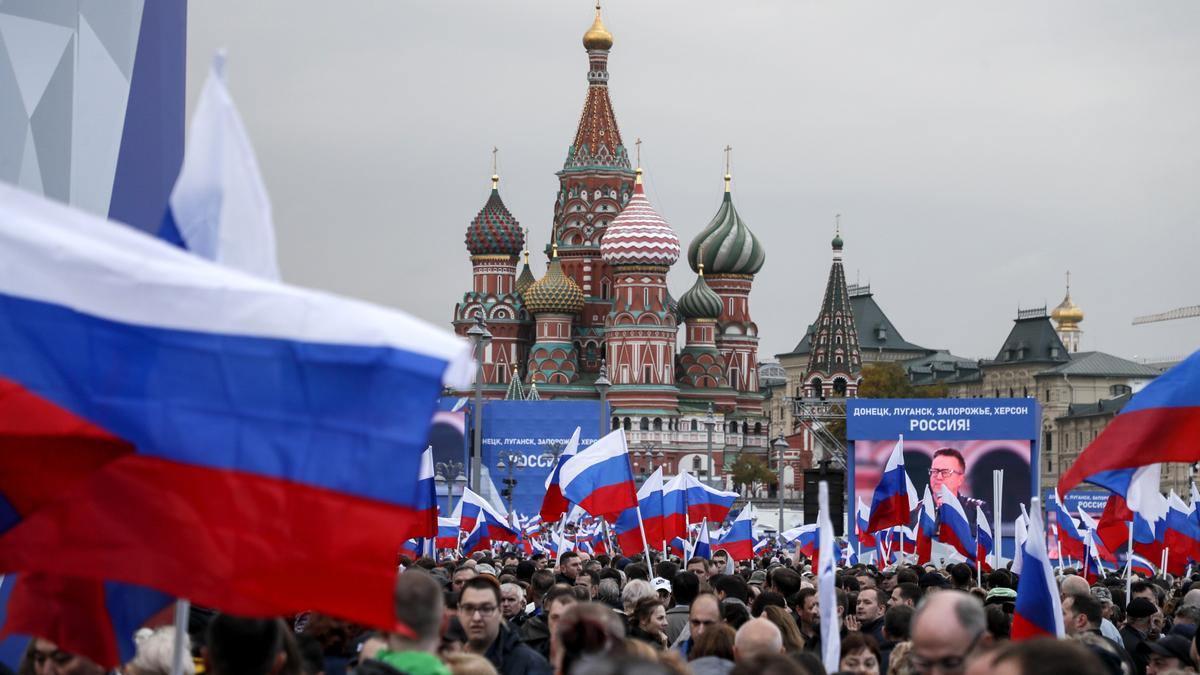“Russia’s border doesn’t end anywhere,” Vladimir Putin famously said in 2016. Questioning that may soon become grounds for prosecution, as Russia looks to ban the non-existent “anti-Russian separatist movement”.
In a motion to the Russian Supreme Court announced on Friday, the Russian Justice Ministry requested the movement be designated an “extremist organisation”, adding that its goal was to “destroy Russia’s multinational unity and territorial integrity”.
It is too early to say unequivocally whom the ban will target if approved, lawyer Valeria Vetoshkina told Novaya Gazeta Europe. However, Vetoshkina has “no doubt” that the lawsuit will be upheld, and the scale of persecution is expected to be “very broad”.
So far experts can only make assumptions based on the organisation’s name, Vetoshkina added, persecuting those who they think hold “anti-Russian” and “separatist” views.
Lawyer Anastasia Burakova suggested that this ban could target anyone who disagreed that the occupied territories of Ukraine, including Crimea and the Donetsk and Luhansk regions, “belong to Russia”.
“Recognising these territories as Ukrainian may count as ‘separatism’,” Burakova said, adding that the authorities could even start prosecuting people for the words “occupied” and “annexed”.
National movements in Russia’s republics could also be at risk, Burakova noted. Russia is home to more than 190 peoples, some of which are very small in terms of population.
While national communities are often not registered as official organisations, they disseminate information about their culture, history and language, Burakova said, and there is a risk that the authorities could now be free to designate any information they don’t like as “extremist”.
What will count as “extremism” will be clearer after the Supreme Court ruling on the matter, which is expected on 7 June, Vetoshkina said. But as with other similar cases, the ruling will only “roughly establish” the red lines, she stressed.
The “anti-Russian separatism” case is yet another example of Russia looking to outlaw a vaguely defined organisation that does not formally exist, as happened with the “international LGBT movement” being designated extremist in November.
The ban on the non-existent “international LGBT movement” has already led to several criminal cases in Russia, despite the Supreme Court ruling conceding that the “LGBT movement” had “no official registration or unified structure”.
Russia has scaled up its persecution of the queer community since the ruling. In March alone, the managers of a Russian gay club were arrested for their alleged involvement in an “extremist organisation”, another gay club was forced to close after a police raid, and a man was charged with using “extremist symbols” for sending a rainbow flag emoji in a private chat.
Those accused of “participating in an extremist organisation” can face up to six years in prison, while suspected “managers” of such organisations can be sentenced to 10 years.
While not much is known about the scale of persecution against supporters of the extremist “LGBT movement” and the soon-to-be extremist “anti-Russian separatist movement”, one thing remains clear: the Russian authorities are benefiting from these blanket bans to target whomever they see fit, Burakova concluded.
Join us in rebuilding Novaya Gazeta Europe
The Russian government has banned independent media. We were forced to leave our country in order to keep doing our job, telling our readers about what is going on Russia, Ukraine and Europe.
We will continue fighting against warfare and dictatorship. We believe that freedom of speech is the most efficient antidote against tyranny. Support us financially to help us fight for peace and freedom.
By clicking the Support button, you agree to the processing of your personal data.
To cancel a regular donation, please write to [email protected]

